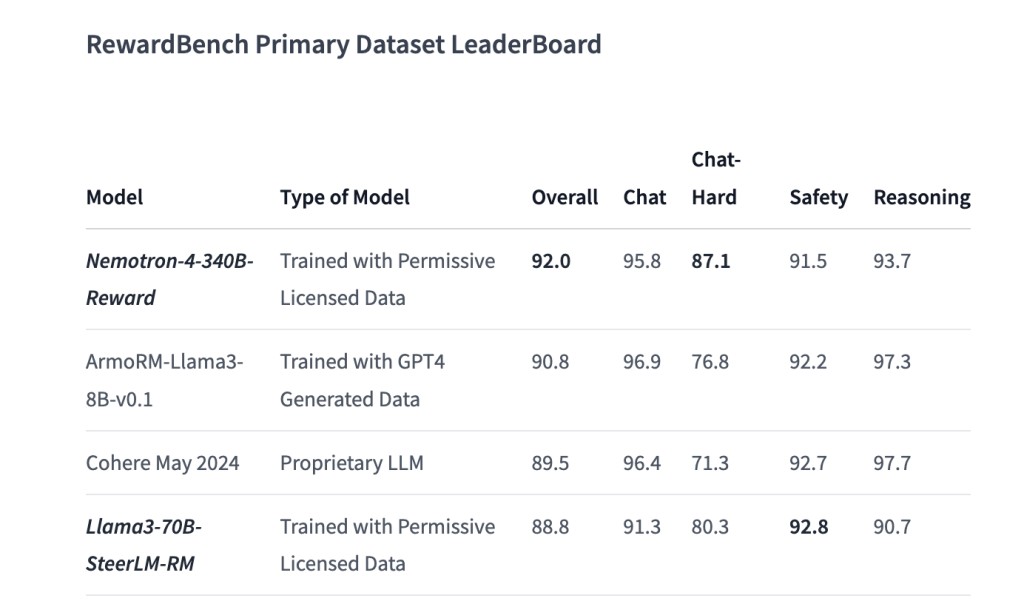Nvidia recently announced the release of two groundbreaking technologies in artificial intelligence: HelpSteer2 and Llama3-70B-SteerLM-RM. These innovations promise to significantly enhance the capabilities of AI systems in various applications, from autonomous driving to natural language processing.
HelpSteer2: Revolutionizing Autonomous Driving
HelpSteer2 is Nvidia’s latest offering in autonomous driving. This new system builds upon the success of its predecessor, incorporating advanced algorithms and enhanced sensor integration to provide a more robust and reliable experience. One of HelpSteer2’s key features is its improved perception system, which uses a combination of lidar, radar, and camera sensors to create a comprehensive understanding of the vehicle’s surroundings. This multi-sensor approach allows HelpSteer2 to detect and respond to various obstacles and environmental conditions, ensuring safer and more efficient driving.
HelpSteer2 leverages Nvidia’s powerful AI infrastructure to learn and adapt to real-world driving scenarios continuously. By processing huge amounts of data collected from its fleet, HelpSteer2 can refine its decision-making processes and improve its performance over time. This capability enhances the safety and reliability of autonomous vehicles and accelerates the deployment of self-driving technology across different regions and environments. HelpSteer2 includes advanced driver assistance features designed to complement human drivers. These features include automated lane-keeping, adaptive cruise control, and collision avoidance, all of which work together to decrease the cognitive load on drivers and enhance overall driving safety. By seamlessly integrating these functionalities, HelpSteer2 provides a smoother transition towards fully autonomous driving.
Llama3-70B-SteerLM-RM: Advancing Natural Language Processing
In parallel with HelpSteer2, Nvidia has also introduced Llama3-70B-SteerLM-RM, a state-of-the-art language model designed to push the boundaries of natural language processing (NLP). With 70 billion parameters, this model represents a significant leap in computational power and language understanding.Llama3-70B-SteerLM-RM is specifically engineered to excel in tasks requiring nuanced language comprehension and generation. This includes machine translation, sentiment analysis, and conversational AI applications. The model’s massive parameter count enables it to capture subtle linguistic patterns and contextual information, resulting in more accurate and coherent language outputs.
One of the standout features of Llama3-70B-SteerLM-RM is its ability to steer its outputs based on specific user requirements or constraints. This “steerable†capability allows users to guide the model’s responses to align with particular styles, tones, or content guidelines. For instance, in customer service applications, Llama3-70B-SteerLM-RM can be tailored to provide consistently polite and helpful responses, enhancing the user experience.
Llama3-70B-SteerLM-RM incorporates robust reinforcement learning mechanisms to fine-tune its performance based on user feedback. By continuously learning from interactions, the model can improve its accuracy and relevance, ensuring it remains responsive to evolving user needs and preferences. Nvidia’s release of HelpSteer2 and Llama3-70B-SteerLM-RM underscores its commitment to advancing AI. These technologies demonstrate Nvidia’s prowess in developing cutting-edge AI solutions and highlight AI’s potential to transform diverse industries.
In conclusion, as HelpSteer2 and Llama3-70B-SteerLM-RM begin to be integrated into real-world applications, they are expected to drive significant advancements in autonomous driving and natural language processing. By enhancing safety, efficiency, and user experience, these innovations promise to impact how people interact with technology in daily life profoundly.
The post NVIDIA AI Releases HelpSteer2 and Llama3-70B-SteerLM-RM: An Open-Source Helpfulness Dataset and a 70 Billion Parameter Language Model Respectively appeared first on MarkTechPost.
Source: Read MoreÂ



